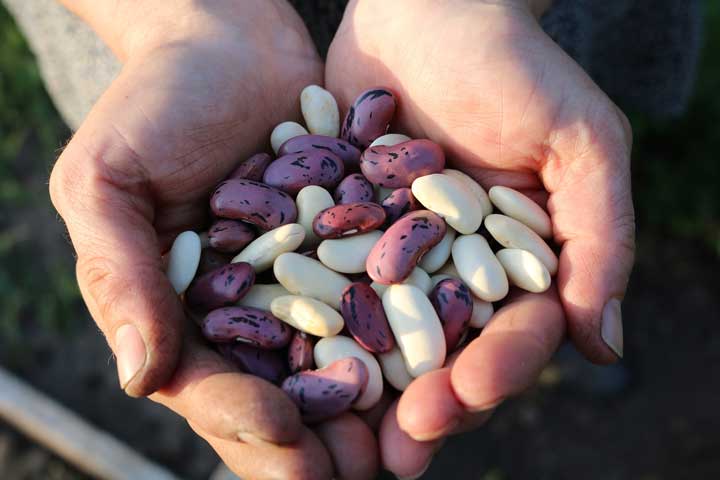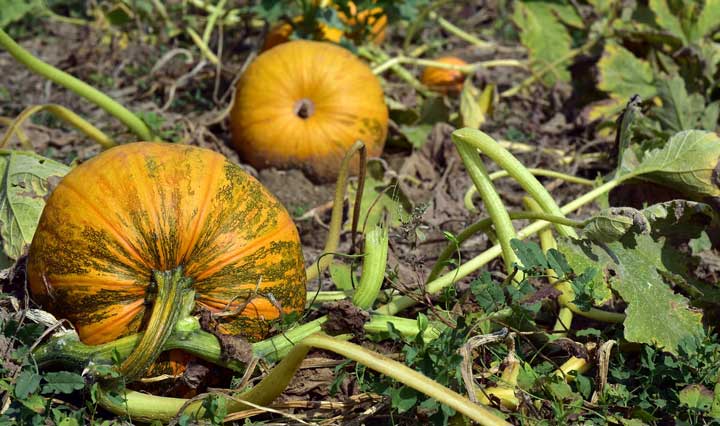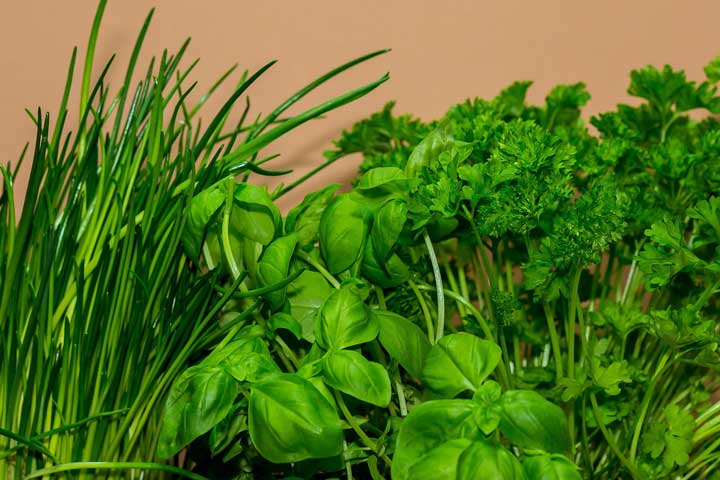Growing your greens and healing herbs will help provide for your family and prepare you for other outdoor adventures. With so many options out there, it can be challenging to figure out what plants will best cater to your specific needs as a survivalist. Today I’ll be walking you through the best herbs and veg for your survival garden and their purposes and benefits.
Planning and Timing
When planning a survival garden, you must consider the climate of the location you live in, the amount of time it will take for you to produce a sustainable food source, and the amount of space you’ll need for what you may have planned.
Putting careful thought into your garden will improve your chances of creating your very own sustainable food source. These plants are a great source of minerals, protein, and carbs, so make sure you work out each family member’s individual needs in terms of daily calories and nutrition. These numbers can fluctuate depending on your activity levels, forcing you to call upon your survival instincts and skills.
Don’t panic if a crop isn’t growing as planned. These things can take years, and finding the best plants that will thrive in your location will take trial and error. Well-established gardens will ensure that you’ll be able to produce enough nutritionally valuable food to prevent any malnourishment should there ever be a food shortage.
What should I grow in my yard?
The ideal survivalist garden should consist of these four great vegetables. Once you’ve successfully grown these, you’ll be able to branch out and start to expand your mealtime selection.
Sweet Potato
This perennial crop is best suited to warmer climates. If you do live further north, you’ll have to be more mindful of the growing season if you plan on growing this vegetable.
Propagating this plant is super easy and can be done using shoots. One sweet potato can provide as many as 16 shoots that you will then plant and harvest from. Once this carb-rich and nutrient-packed tuber establishes some healthy roots in the soil, it will take around three to four months before you can start to harvest them. One plant will give you around 20 sweet potatoes, and their vines spread themselves quickly about the garden.
This veg is perfect for a nutritious and filling meal and is extremely rich in Vitamin B; C; D; Calcium; Iron; Magnesium; Phosphorus, and Potassium.
Beans

Beans are a great way to incorporate protein into your diet and are take minimal effort to grow. This vegetable comes in many varieties apart from the most common bush and vine versions.
Once you’ve successfully planted them, you’ll be able to harvest them throughout their growth process. Day 50 will bring you a whole green bean crop, and by day 120, you’ll be able to harvest mature and dry beans, which will enable you to store them for more extended periods. Dry beans are rich in multiple micronutrients, including potassium, magnesium, folate, iron, and zinc, and are important protein sources in vegetarian diets. They’re also great for taking on trips and can be prepared over the fire with just a little water.
Once harvested, you have the choice of either cooking them or replanting them for the next season. If you plan on going the mature, dried bean route, a good rule of thumb is to grow ten plants for each family member.
Carrots
Carrots are a great first choice when creating your survivalist garden. They can withstand many elements and remain healthy no matter how long you leave them in the soil. Those that are left in the ground tend to acquire a sweeter flavor.
Carrots come packed with antioxidants and essential nutrients that help the body survive. After 50 days, you’ll be able to harvest baby carrots. Baby carrots contain high potassium and dietary fiber levels, which will lower your blood pressure, cholesterol levels, and chances of suffering from heart disease. Around the 75 day mark, you’ll be able to harvest the more mature carrots.
Squash

Apart from having a great selection to choose from, squash is one of the most prolific annual producers. Once planted, all you have to do is wait 40 days before making your first harvest.
When looking at what squash variety you’d like to grow, you have plenty to choose from, including and not limited to scallopini, zucchini, and yellow crookneck. When planting in the colder months, you’ll want to look at growing the buttercup squash, pumpkin, spaghetti squash, and acorn squash.
When planting squash in your survival garden, you’ll need to produce at least two summer squashes for each family member.
What is the most efficient crop to grow?
Sweet potatoes happen to be at the top of the list when efficient crops grow. They are easy to plant, maintain and harvest and provide you with plenty of calories per square space in your garden.
Lavender is another efficient plant due to its multifunctional properties. The herb itself is often sought after by craftsmen and cosmetic manufacturers and can be sold for quite a high price. It is super easy to maintain, it also requires very little irrigation and fertilizer, so it looks after itself.
I enjoy growing some microgreens indoors during the winter months as they’re rich in vitamins, minerals, and antioxidants and don’t take up too much space. Microgreens are easy to maintain and at a great finishing touch to any meal.
What is the tree that every prepper should grow in his backyard?
The Moringa tree is often referred to as the ‘Miracle tree’ and for a good reason. This tree is up there with some of the great superfoods and is extremely versatile. It has over 90 nutrients, including eight essential amino acids that our bodies cannot produce on their own and a long list of vitamins.
Almost every part of the tree can be eaten, from the pods to the leaves, and they all benefit the body in different ways. This tree does it all from healthier bowel movements to stabilized blood sugar levels and lower cholesterol levels.
When crushed, the seeds hold the ability to purify water and remove any harmful bacteria. Take a look at some of the other ways you can use your survival instincts to purify water.
Healing Herbs for Your Survival Garden

Herbs have a long history of being used in a number of traditional medicines. The Chinese still use them when using herbal medicine, and their usage can be traced as far back as the first century CE. In Western cultures, herbs were used first by the Hippocratic(Greek) elemental healing system.
It’s a no-brainer with such a long history of use to have some planted in your survival garden. Here are some of the best herbs for you to grow;
Basil
Besides making a great pesto, basil is a great natural anti-inflammatory and is thought to have mild antiseptic functions. Some use the plant for treating flatulence, lack of appetite, nausea, and mild surface wounds.
You will need to plant a new plant every year as this herb is known as an annual plant.
German Chamomile
Chamomile is extremely popular in the Western world and for a good number of reasons. The flower heads are commonly used to make infusions, teas, and slaves. These products can be used to treat indigestion, anxiety, and skin inflammation. As a tea, Chamomile acts as a mild sedative to help with sleep.
Feverfew
Feverfew is a perennial member of the sunflower family and has been used by many for centuries in traditional European folk medicine. Many use it for its healing properties to treat headaches, arthritis, and fevers. The name itself is a derivation from the Latin word meaning “fever reducer.”
Once fully grown, the leaves can be harvested and made into a tea or simply chewed on for relief from migraines and symptoms of arthritis.
Lemon Balm
Lemon Balm is closely related to mint and is considered to be a calming herb. Usage of this herb can be traced as far back as the Middle Ages and was often used to help reduce stress and anxiety and promote good sleep and relieve indigestion.
Before the Middle Ages, lemon balm was used to help heal wounds, treat insect bites and stings.
Parsley
Parsley is excellent after a garlic-heavy meal as it neutralizes any bad smells in the mouth. This millennial plant (only needs to be planted every two years) can be brewed as a tea to help increase the amount of iron in a person’s diet.
Drinking parsley tea will boost your energy levels and improve circulation in the body. It can also be used as an effective diuretic and fights any stomach issues.
Sage
The genus name for sage is “salvia,” which means “to heal.” First-century CE Greek physicians would often use this plant to help stop bleeding on trauma wounds, clean ulcers, and disinfect sores. Sage juice can also be used to treat sore throats and cough when mixed with warm water.
In modern-day times, sage works well to soothe any mouth inflammations due to its antibacterial and astringent properties.
Rosemary
Rosemary was once known as ‘the herb of remembrance.’ In places across the globe such as Australia and New Zealand, it symbolizes remembrance and helps sharpen mental clarity and stimulate brain function. Many ancient Greeks and Romans statues display the men with sprigs of rosemary around their heads, representing mental acuity.
The needles from this fragrant herb can be used in tea to treat digestive problems and help relieve pain from headaches, muscle spasms and improve memory and stimulate hair growth.
Peppermint
The medicinal use of peppermint can be archaeologically traced back to tens of thousands of years ago. The commonly-used herb will treat and soothe stomach issues such as nausea, vomiting, abdominal pain, bloating, and more.
The well-known scent is often used when creating cosmetic products and fragrances. When planting peppermint, it is best to find a moist, well-shaded area and is best planted in a pot to prevent it from rapidly spreading across the garden.
Peppermint is easy to propagate and can be grown quickly from a cutting placed over a glass of water.
Lavender
Lavender tea can calm a person’s mind and body. When used in tea form, lavender can promote a sense of well-being and alleviate any stress. This fragrant herb will treat various gastrointestinal issues such as upset stomachs and flatulence.
When applied topically, lavender can help heal cuts and spores due to its strong antiseptic qualities. It can also help cover up bad breath.
How to Get Started On a Survival Garden
When it comes to vegetables, it is very easy to decide on which to start with. The four listed above are novice-proof and will produce a healthy crop with very little encouragement.
With herbs, it can be a little trickier when deciding where to start. Most of it will depend on the amount of space you have available in the garden and the surrounding climate and the availability of seeds or cuttings. An excellent way to get started is to choose your top three herbs that you find most appealing from a health and wellness perspective. Start by growing them on your porch and take it from there.
Plan for Each Season
Before grocery stores were a thing, people had to plan how they would go about spring their food supply over the winter months. When looking at food storage, you have three possible options- winter harvesting, cold storage, and preservation. A combination of all three will help you maintain and diversify a healthy, nutrient-rich diet throughout the year.,
Winter Harvesting
Another way to ensure that your crops continue to produce is to construct a greenhouse, cold frame, or use row covers. These methods will protect your plants from the harsh winter elements and continue to create a healthy feast.
Long Term Storage
A root cellar will help you store all your vegetables for up to 9 months. Cold storage helps preserve canned goods. Make sure you do your research before investing in any storage equipment, as each variety requires a different set of instructions and conditions.
Preservation
Fruits and vegetables with a short shelf life are best suited to preservation methods such as canning, drying, freezing, and fermenting. A little hack I like to use is baking my vegetables into bread or meals before freezing. A good starting point for any beginner is having a go at preserving tomatoes, cucumbers, peppers, and strawberries.
What food grows all year round?
One of the best crops for an all-year-round supply is the Jerusalem artichoke. These are a great survival crop as they produce all winter long. Brassicas such as kale, cabbage, turnips, broccoli will over the winter months and provide you with enough to keep you going through the rest of the year. Carrots can be harvested in late autumn and are easy to store for the rest of the year.
Seed Saving
The best and most affordable and sustainable way to replant or reseed perennial plants every year is to save the seed from the previous year’s crop. All plants have seeds that can be collected and stored, but it’s all about finding the time to harvest them as it can be pretty tricky with some variations.
Carrots work great with long-term storage plans but harvesting the seed tends to be slightly tricky. As carrots are biennial, you’ll have to wait until they flower in the second year before you can gain access to their seeds.
In contrast, tomatoes are extremely easy to harvest the seeds from. This fruit is easy to preserve over winter and will even self-sow itself in the garden when the new season begins. This fruit is excellent for a number of recipes and is easy to look after.
When collecting your seeds, remember to dry them out properly and keep them stored in airtight seed bags or containers. You’ll ensure they’ll keep by storing them in a dark and cool space. A seed bank is a great way to prepare in an emergency, so get yours started now!
Things To Keep In Mind
With these herbs, many of them possess the same healing qualities leading some to wonder whether or not they work. I can vouch for both lavender and peppermint as I use both as a tea and essential oil for relaxation and digestive trouble.
With very little time and minimal expense, you can grow some of the most potent medicinal ingredients that will make brilliant teas, infusions, and balms.
Keep in mind that perennial plants will produce the most over the winter months and will still provide you with valuable nutrition until they need to be reseeded and restarted for the following year.
The above-mentioned holy grail of vegetables to grow are just the tip of the iceberg in terms of the best plants to grow in your backyard. Not everyone will be a fan of them, so you might want to branch out a bit and explore some of your options. Maybe you fancy having a go at growing a few Jerusalem artichokes or some delicious nettles; both are rich in nutrients and will provide you with a hearty meal with every harvest.
With gardens, nothing is for sure, but one thing that can be guaranteed is that an effective survival garden isn’t going to appear overnight. It will take plenty of work and hours of reseeding, watering, and waiting for roots to grow. You will need to get familiar with the different soil types and the best to plant and harvest from the land.
Not only do you have to decide on which plants will be best for you and your family in terms of nutrients, but you will also have to figure out whether or not they will be well-supported in your location.
The best thing to do is start planting now and build your survival garden as soon as possible. You never know when you might be forced into survival mode, and your survival garden will be what determines whether or not you’ll successfully survive whatever life throws at you.

